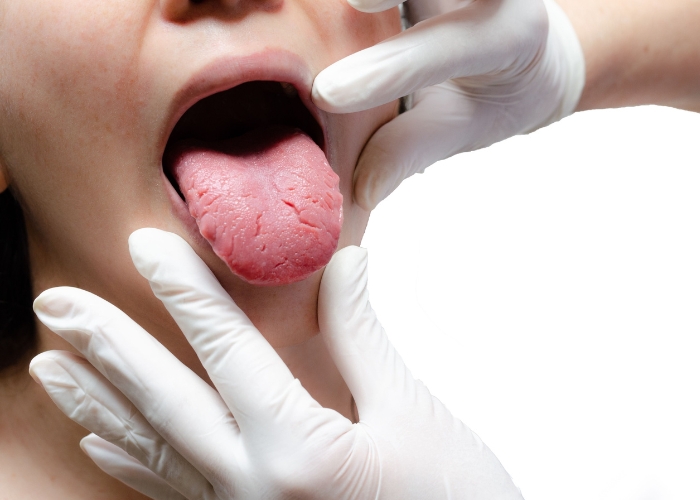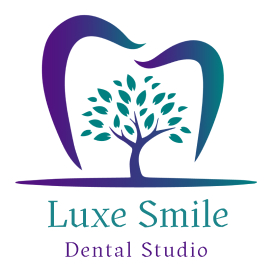How Does Tongue Thrusting Lead to Misaligned Teeth Over Time?


Most people never think about where their tongue rests when they’re not eating or speaking. But that subtle tongue movement—especially when it pushes against the teeth—can do more harm than you’d expect. This common but often overlooked habit, known as tongue thrusting, can cause misalignment in your teeth and affect your overall oral health.
While thumb-sucking and pacifier use are well-known culprits behind crooked teeth in children, tongue thrusting is the silent factor many teens and adults don’t realize they’re dealing with. It may start in early childhood but can persist into adulthood, leading to gradual but noticeable changes in your bite.
What Is Tongue Thrusting?
Tongue thrusting happens when your tongue pushes forward against your front teeth during swallowing, speaking, or even while resting. The ideal position for the tongue is up against the roof of the mouth, tucked behind the front teeth. But in a person who tongue-thrusts, the tongue presses against or between the teeth.
It may sound harmless, especially if done unconsciously, but that consistent pressure can alter the alignment of your teeth over time.
Why Does It Happen?
There isn’t just one reason behind tongue thrusting. It can develop due to a combination of factors. Common causes include:
- Prolonged thumb-sucking or pacifier use in early childhood
- Chronic mouth breathing from allergies or enlarged tonsils
- Improper swallowing patterns
- Neurological or muscular issues that affect tongue control
- Genetic predispositions
In children, the muscles of the tongue are still developing, and any disruption during that stage can create habits that last into adulthood. Once it becomes a habit, it can be hard to reverse without intervention.
How Does Tongue Thrusting Lead to Misaligned Teeth?
It’s a question that parents of kids struggling with this condition often wonder. Here’s how:
1. Open Bite
One of the most common outcomes of tongue thrusting is an open bite. This occurs when the upper and lower teeth don’t touch when the mouth is closed. It results in a gap between the front teeth. That gap is usually created by the repeated forward motion of the tongue pushing those teeth apart.
2. Overjet Development
Over time, tongue thrusting can push the upper front teeth forward, resulting in what’s called an overjet. This gives the appearance of protruding front teeth, sometimes called “buck teeth.” Not only does this affect appearance, but it can also make it harder to bite into foods properly.
3. Crowding and Shifting
Pressure from the tongue can also force neighboring teeth to shift or rotate, leading to crowding or crooked teeth. Even if someone once had straight teeth after orthodontic treatment, tongue thrusting can slowly undo those results.
Signs You Might Be Tongue Thrusting Without Realizing It
Because tongue thrusting can be subtle, it often flies under the radar. Here are some signs that might indicate that you or your kid has it:
- Frequent mouth breathing
- Lisping, especially when pronouncing “s” or “z” sounds
- Difficulty keeping the lips closed without effort
- Front teeth that appear to be drifting outward
- Orthodontic relapses despite using retainers
If you’re seeing any of these signs in yourself or a child, it’s worth consulting with a dental professional or orthodontist.
Why Should You Act Fast: Early Detection Is Key
Like many oral habits, early intervention makes a significant difference. When tongue thrusting is caught early, especially in children whose jaws are still growing, treatment can be more effective and less invasive.
That said, adults aren’t out of options. While the bones are no longer developing, tongue posture and muscle habits can still be corrected with proper guidance.
How Dentists and Orthodontists Diagnose the Problem
Dentists and orthodontists are trained to recognize the patterns that tongue thrusting leaves behind. During an exam, they might:
- Ask about speech patterns or breathing habits
- Evaluate one’s bite and tooth alignment
- Watch how one’s tongue moves while swallowing
- Take X-rays or impressions to assess a bite from different angles
Treatment Options That Can Help
The goal of treatment is twofold: fix the damage and stop the behavior. Depending on the age of the patient and the severity of the condition, the treatment plan may involve:
1. Myofunctional Therapy
This therapy is designed to retrain the tongue and facial muscles in their designated place. Through a series of exercises, patients learn the right swallowing techniques and tongue placement.
2. Orthodontic Treatment
Braces or clear aligners like Invisalign can help the patient to realign teeth that have shifted due to tongue thrusting. However, orthodontic treatment alone won’t solve the problem unless the tongue habit is addressed too.
3. Tongue Crib Appliance
In more severe cases, a special orthodontic appliance called a tongue crib may be used. It’s a small metal device placed in the mouth to prevent the tongue from pushing against the teeth. It’s especially effective in children and teens.
4. Speech Therapy
If tongue thrusting is related to speech problems, a speech therapist can work alongside other professionals to improve coordination and reduce the habit.
Why Ignoring It Can Make Things Worse
It’s easy to assume that minor habits will fade on their own. But tongue thrusting doesn’t usually go away without medical intervention. Left unchecked, it can lead to:
- Increased need for orthodontic work
- Relapse after braces
- Chronic jaw pain or TMJ issues
- Difficulty with clear speech
- Long-term aesthetic concerns
Beyond dental concerns, improper tongue posture can also interfere with breathing and sleeping patterns.
Small Habit, Big Impact
The tongue may be one of the most underestimated muscles in your body, but its resting position and movement can change the entire structure of your smile. Tongue thrusting might seem minor at first, but over time, it can lead to significant misalignment and costly corrections.
If you suspect you or someone you care about might be dealing with this habit, don’t wait. A quick consultation with an orthodontic professional can help uncover the issue and set you on the right path toward healthier, more aligned teeth.


